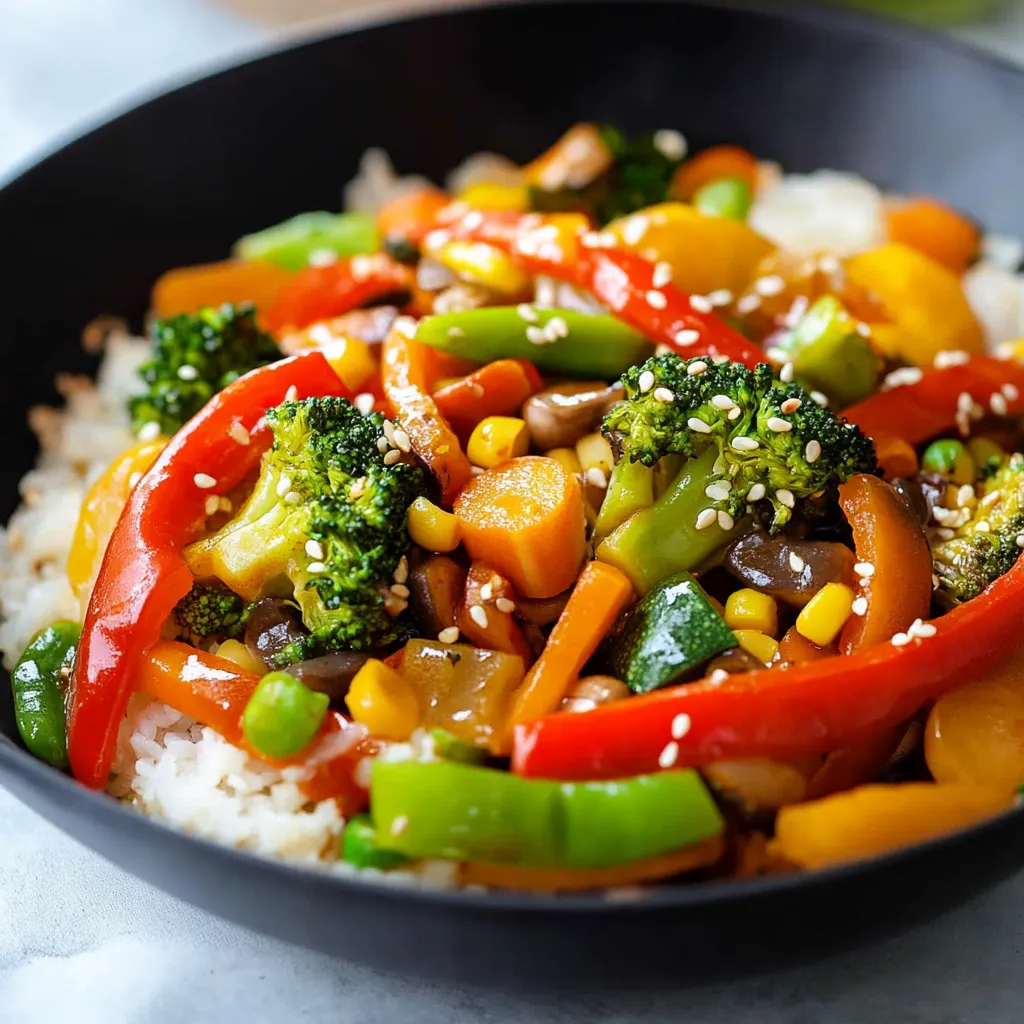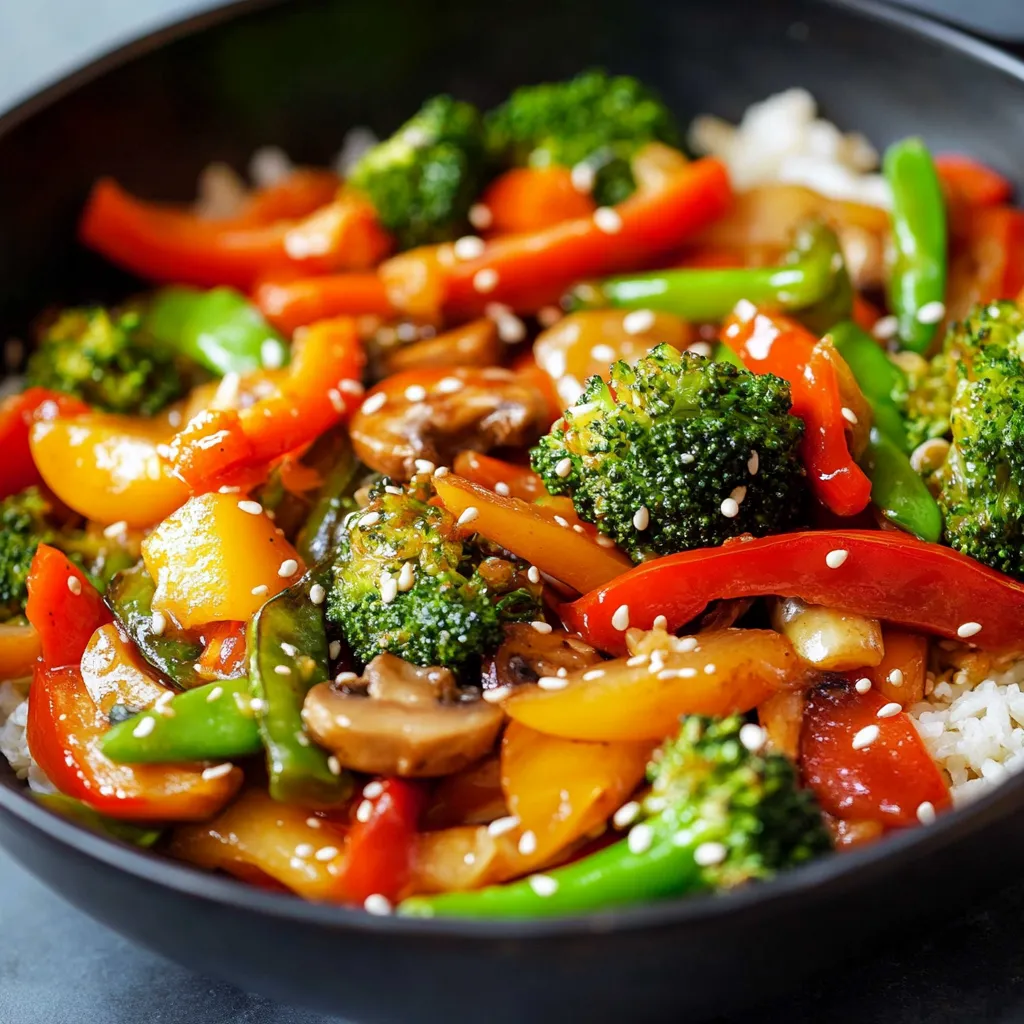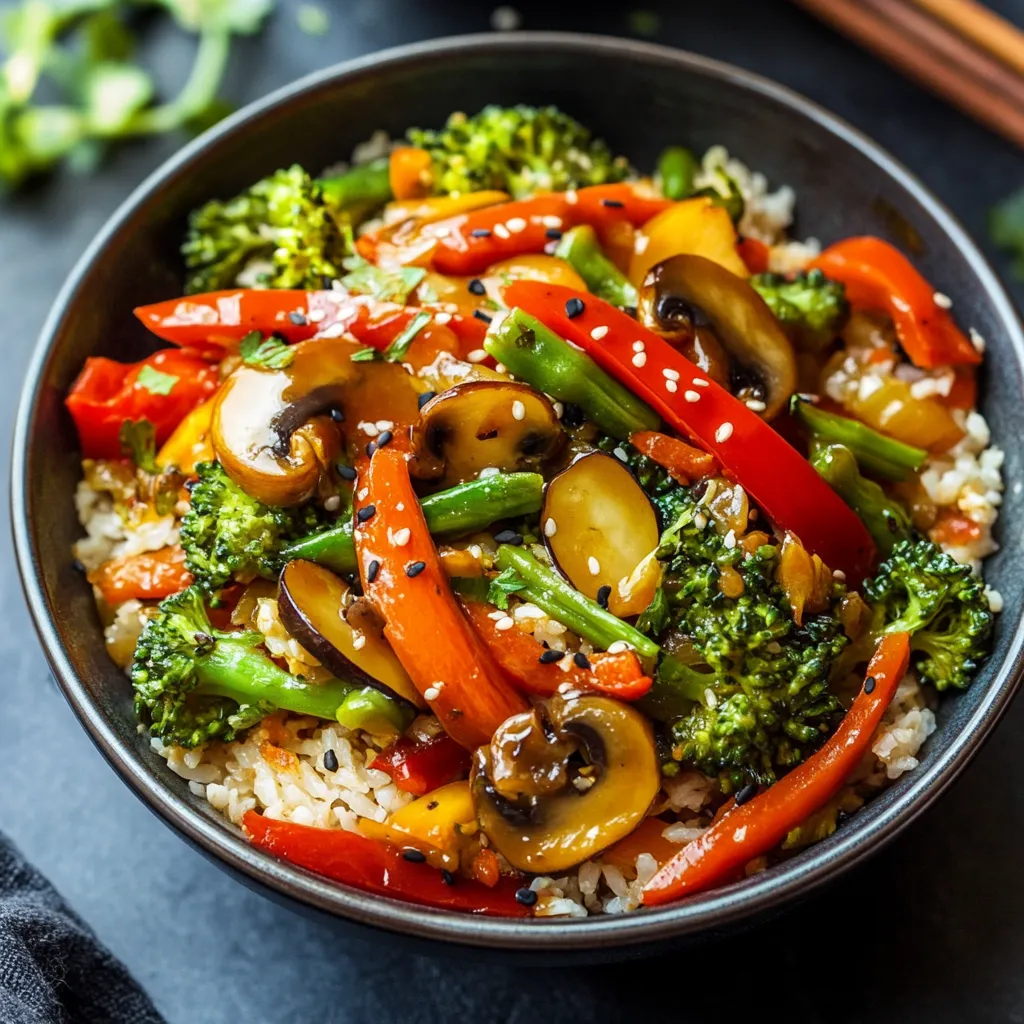 Pin it
Pin it
Turn plain veggies into a colorful, juicy stir-fry that beats any takeout meal. This flexible dish pairs snappy vegetables with a thick, homemade sauce that wraps around every bite perfectly.
I've tried tons of stir-fry methods over the years and found that getting the timing right and nailing the sauce thickness makes all the difference. This has become what our family makes when we're rushed on weeknights.
Important Ingredient Breakdown:
- Vegetables: Go for crisp, fresh options
- Ginger: Real root, skip the jarred stuff
- Soy Sauce: Pick low-sodium for better taste control
- Oil: Something that won't smoke easily like canola or peanut
- Garlic: Fresh cloves, chopped right before cooking
- Cornstarch: The key for making sauce thick
- Sesame Oil: Only use the dark toasted kind
Cooking Walkthrough:
- Getting Sauce Ready:
- Mix soy sauce, toasted sesame oil, chopped garlic, grated ginger, and brown sugar in a bowl. Stir cornstarch with cold water until smooth, then add to your sauce mix. Put aside.
- Prepping Your Veggies:
- Cut everything roughly the same size so they cook evenly. Group them by how long they take: tough ones (carrots, broccoli), middle ones (mushrooms, bell peppers), and quick ones (snow peas).
- First Cooking Step:
- Get a big wok or pan super hot. Pour in oil and wait till it shimmers. Start with the tough veggies like carrots and broccoli first.
- Middle Cooking Step:
- After 2-3 minutes, toss in your medium-cooking veggies. Keep everything moving constantly. You should hear sizzling when food touches the pan.
- Last Cooking Step:
- Throw in quick-cooking veggies last. Keep stir-frying until everything's tender but still has some crunch, about 5-6 minutes total.
- Adding The Sauce:
- Pour your sauce around the sides of the pan so it runs down naturally. Quickly toss everything to coat. Cook until the sauce gets thick and shiny.
 Pin it
Pin it
Great stir-fry comes down to good prep work. My grandma always told me to set up veggies before cooking just like painters arrange their colors.
Managing Your Wok Heat
Getting the heat just right makes veggies cook fast while staying crisp. Don't pour cold sauce into a super hot pan - it should be just warm when you add it. Use high heat for cooking veggies, then slightly lower heat when thickening the sauce.
Nailing The Sauce Consistency
Let your sauce bubble gently while stirring it non-stop until it coats a spoon when dipped. It should look shiny and stick to your veggies without turning gloopy.
Keeping Leftovers Fresh
Store what's left in a sealed container for up to 3 days. Warm it up fast in a hot wok to keep some crunch. Don't try freezing it - your veggies will turn soggy.
Ways To Serve It
Put it on top of rice or noodles. Add some protein like chicken, shrimp, or tofu for a complete dinner. Sprinkle with green onions and sesame seeds before eating.
 Pin it
Pin it
I've made this so many times to use up whatever veggies are in season. The simple sauce and cooking method can turn any mix of vegetables into something tasty that's way better than ordering in.
Frequently Asked Questions
- → Can I use frozen veggies?
- Yes! But make sure to thaw them thoroughly and drain any water to avoid sogginess.
- → Is the sauce gluten-free?
- If you swap soy sauce for tamari, it’s totally gluten-free.
- → Can I cut veggies ahead?
- Absolutely! Chop them up to 2 days early—just store them in tightly sealed containers.
- → What proteins work with this?
- You can go with shrimp, tofu, chicken, or beef. Cook your protein first, then add it back in at the end.
- → How do I keep leftovers fresh?
- Store leftovers in the fridge for up to 3 days. Reheat quickly in a wok so veggies stay crisp.
